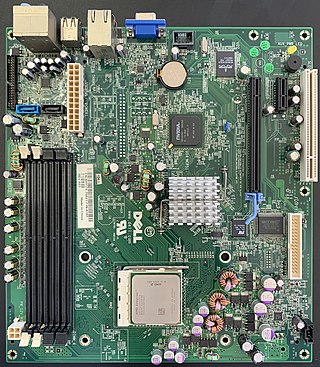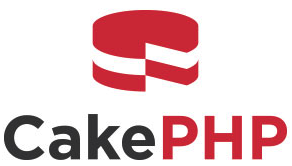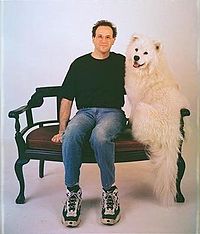
Computing is any goal-oriented activity requiring, benefiting from, or creating computing machinery. It includes the study and experimentation of algorithmic processes, and development of both hardware and software. Computing has scientific, engineering, mathematical, technological and social aspects. Major computing disciplines include computer engineering, computer science, cybersecurity, data science, information systems, information technology, digital art and software engineering.
A fourth-generation programming language (4GL) is a high-level computer programming language that belongs to a class of languages envisioned as an advancement upon third-generation programming languages (3GL). Each of the programming language generations aims to provide a higher level of abstraction of the internal computer hardware details, making the language more programmer-friendly, powerful, and versatile. While the definition of 4GL has changed over time, it can be typified by operating more with large collections of information at once rather than focusing on just bits and bytes. Languages claimed to be 4GL may include support for database management, report generation, mathematical optimization, GUI development, or web development. Some researchers state that 4GLs are a subset of domain-specific languages.
An integrated development environment (IDE) is a software application that provides comprehensive facilities for software development. An IDE normally consists of at least a source-code editor, build automation tools, and a debugger. Some IDEs, such as NetBeans and Eclipse, contain the necessary compiler, interpreter, or both; others, such as SharpDevelop and Lazarus, do not.

Computer engineering is a branch of electronic engineering and computer science that integrates several fields of computer science and electronic engineering required to develop computer hardware and software. Computer engineers require training in electronic engineering, computer science, hardware-software integration, software design, and software engineering. It uses the techniques and principles of electrical engineering and computer science, and can encompass areas such as artificial intelligence (AI), robotics, computer networks, computer architecture and operating systems. Computer engineers are involved in many hardware and software aspects of computing, from the design of individual microcontrollers, microprocessors, personal computers, and supercomputers, to circuit design. This field of engineering not only focuses on how computer systems themselves work, but also on how to integrate them into the larger picture. Robotics are one of the applications of computer engineering.
The following outline is provided as an overview of and topical guide to software engineering:

Project Athena was a joint project of MIT, Digital Equipment Corporation, and IBM to produce a campus-wide distributed computing environment for educational use. It was launched in 1983, and research and development ran until June 30, 1991. As of 2023, Athena is still in production use at MIT. It works as software that makes a machine a thin client, that will download educational applications from the MIT servers on demand.
ArsDigita, LLC, was a web development company founded in Cambridge, Massachusetts in 1997. The company produced a popular open source toolkit, the ArsDigita Community System (ACS), for building database-backed community websites, and flourished at the peak of the dot-com bubble. ACS was also the roots of OpenACS, which added PostgreSQL as a database option and gave the system a fully open-source stack.
The ArsDigita Community System (ACS) was an open source toolkit for developing community web applications developed primarily by developers associated with ArsDigita Corporation. It was licensed under the terms of the GNU GPL, and is one of the most famous products to be based completely on AOLserver. Although there were several forks of the project, the only one that is still actively maintained is OpenACS.
"On the Cruelty of Really Teaching Computing Science" is a 1988 scholarly article by E. W. Dijkstra which argues that computer programming should be understood as a branch of mathematics, and that the formal provability of a program is a major criterion for correctness.
An electronic lab notebook is a computer program designed to replace paper laboratory notebooks. Lab notebooks in general are used by scientists, engineers, and technicians to document research, experiments, and procedures performed in a laboratory. A lab notebook is often maintained to be a legal document and may be used in a court of law as evidence. Similar to an inventor's notebook, the lab notebook is also often referred to in patent prosecution and intellectual property litigation.
In computing, a solution stack or software stack is a set of software subsystems or components needed to create a complete platform such that no additional software is needed to support applications. Applications are said to "run on" or "run on top of" the resulting platform.
Engineering Animation, Inc., or EAI, was a services and software company based in Ames, Iowa, United States. It remained headquartered there from its incorporation in 1990 until it was acquired in 2000 by Unigraphics Solutions, Inc., now a subsidiary of the German technology multinational Siemens AG. During its existence, EAI produced animations to support litigants in court, wrote and sold animation and visualization software, and developed a number of multimedia medical and computer game titles. Part of EAI's business now exists in a spin-off company, Demonstratives.

CakePHP is an open-source web framework. It follows the model–view–controller (MVC) approach and is written in PHP, modeled after the concepts of Ruby on Rails, and distributed under the MIT License.
Douglas Taylor "Doug" Ross was an American computer scientist pioneer, and chairman of SofTech, Inc. He is most famous for originating the term CAD for computer-aided design, and is considered to be the father of Automatically Programmed Tools (APT), a programming language to drive numerical control in manufacturing. His later work focused on a pseudophilosophy he developed and named Plex.
Master of Business Informatics (MBI) is a postgraduate degree in Business Informatics (BI). BI programs combine information technology (IT) and management courses and are common in central Europe. The first master programs in Business Informatics were offered by the University of Rostock, as a face-to-face program, and by the Virtual Global University (VGU) together with the European University Viadrina Frankfurt (Oder) as an online program . An MBI programme, which includes inter-cultural studies affecting business operations in European markets, was first offered by Dublin City University. Within the Bologna process, many Central European universities have been, or are in the process of, setting up master programmes in Business Informatics. Due to legal frameworks and restrictions, however, most of these programs are forced to award an M.Sc. degree instead of an MBI degree.
The Indexed Database API is a JavaScript application programming interface (API) provided by web browsers for managing a NoSQL database of JSON objects. It is a standard maintained by the World Wide Web Consortium (W3C).

Founders at Work: Stories of Startups' Early Days (2007) is a book written by Jessica Livingston composed of interviews she did with the founders of famous technology companies concerning what happened in their early years.
The College of Engineering Vadakara (CEV) is an engineering college in Kozhikode district of Kerala, established in 1999.
A. P. Shah Institute of Technology is a private engineering college located in Kasarvadavali, in Thane, India. It was established in 2014 and is managed by the Parshvanath Charitable Trust.





